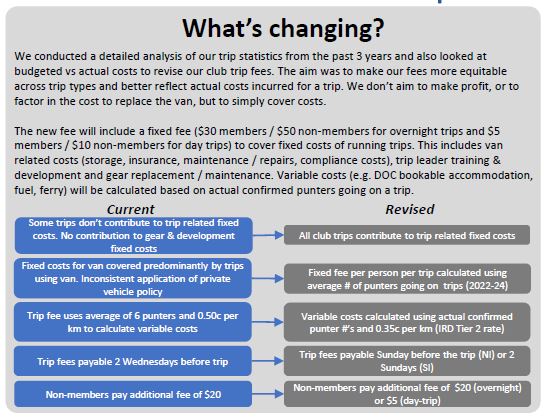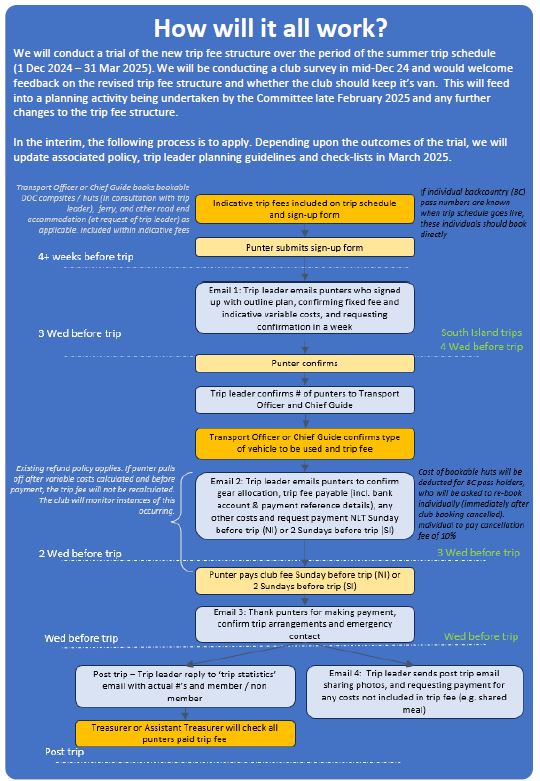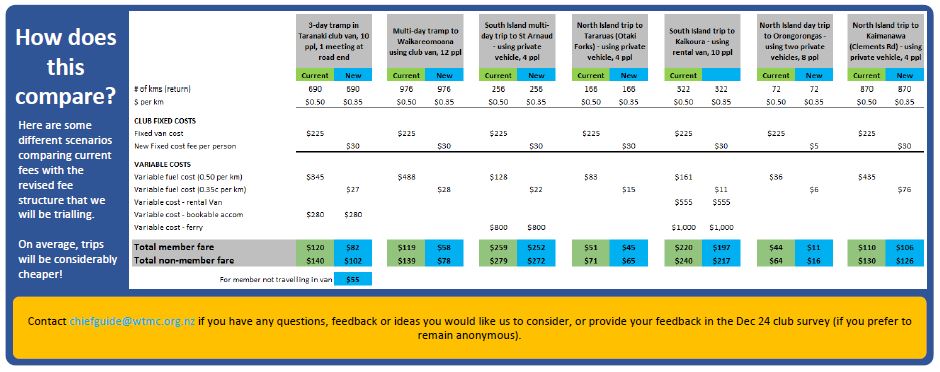From 1 December 2024-March 2025, we are trialling a new trip fee structure and processes. Read below to find out what’s changing, how it will work (interim processes will apply), and how it compares to the previous trip fees. Please email chiefguide@wtmc.org.nz if you have any questions!



————————-
THIIS WEBPAGE IS IN THE PROCESS OF BEING UPDATED! Please email chiefguide@wtmc.org.nz for up-to-date trip planning templates and checklists.
—————————————–
Thank you for taking the time to lead a trip for WTMC.
As a WTMC trip leader, you are expected to:
- Plan the trip including:
- confirming punters and numbers;
- collecting money;
- forwarding emergency contact details;
- sorting out route, group gear and food;
- finding van drivers from within your group.
- Lead during the trip, which primarily means:
- facilitating good decision making by the group;
- keeping an eye on how people are going;
- being prepared to take charge in difficult/emergency situations.
If you are interested in leading trips, or new to leading trips, contact chiefguide@wtmc.org.nz to get copies of updated trip planning and useful guidance documents.
Useful Resources for Trip Leaders
Trip Intentions Sheet (updated 12 June 2017)
Using online forms to organise club trips.
WTMC Driver Protocols (60KB)
WTMC Driver Vetting Form (260KB)
Air New Zealand’s airport handling notice relating to camping stoves (107 KB)
Useful Links for Leaders
You may find the information on some of these sites useful*.
Federated Mountain Clubs of New Zealand
Staying safe in the mountains (Wilder Life)
Department of Conservation
DOC Maps
New Zealand Topographic Maps
Walking Access Mapping System
Royal Forest and Bird Protection Society of New Zealand
NZ Land Search And Rescue
NZ Mountain Safety Council
New Zealand Metservice
New Zealand weather and climate service(Metvuw)
NIWA Weather (Parks)
How to read weather maps
Off track routes
Tararua Footprints
Kiwi Tramping Online
New Zealand Tramper
Wellington Regional Council – River Levels
Canterbury River Flows
Remote Huts Westland
Avalanche Centre
NZ Canyoning
Rigging a tarp
Wilderness Magazine
FMC Outdoor Community
*The club takes no responsibility for accuracy of information on these websites.
